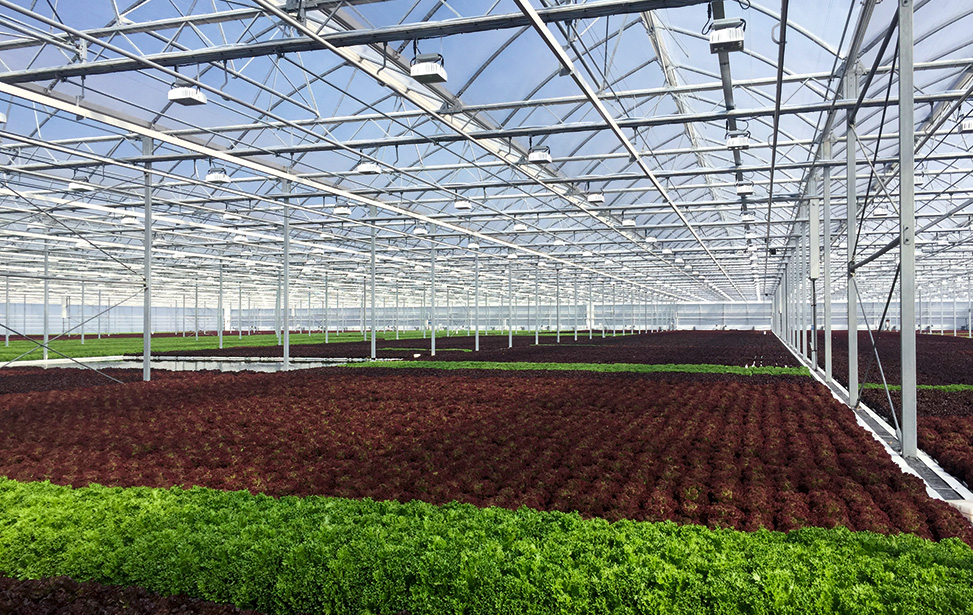Ten layer propagation and fully automated production
”Soon, I will be able to sit back and relax.” Speaking is Dutch lettuce grower, Willem Bas, of the Dutch company, B-Four Agro, with a twinkle in his eye. He was asked what there would be for him actually to do in his new ultramodern greenhouse made by Vermako Greenhouses Belgium. It is, of course, not true that he will have nothing to do.
However, almost everything will soon be fully automated at this company in Warmenhuizen, the Netherlands.
Remarkable on the project is indeed the level of automation: from seeding to germination and than the propagation, taking place in a 10 layer vertical farm. Afterwards the plants are being moved into the greenhouse and mature on floaters with their roots in controlled water.
The cultivation in the three-hectare greenhouse, build by Vermako Greenhouses Belgium, will produce about 190.000 heads of lettuce. This lettuce will be sold at retailer Albert Heijn year-round. The product will be supplied to the stores via the vegetable processing company, Koninklijke Vezet.
It will ensure a secure supply of lettuce that is of consistently high quality and allows Albert Heijn to now offer the six Dutch-cultivated lettuce varieties in the winter too. These six are the Butter lettuce, Red and Green Oak leaf lettuce, Frisée, Lollo Rossa, and Batavia varieties.
“Only a small amount of lettuce will have to be imported from southern countries in the winter. This translates into considerable cuts in transportation costs and CO2 emissions. A saving of one full truck’s diesel per day”, according to a spokesperson from Albert Heijn.
Bas knows all too well that by growing plants hydroponically, fewer fertilizers and pesticides are also used. Until recently, the company only grew lettuce and celery, in full soil, on more than 100 hectares.
Together with his associates, Bart Bak and Fred Berkhout, Bas started experimenting with hydroponic farming in 2007. “At first, just outside but you cannot control the climate. Over ten years, we developed the optimum growth recipe”, Bas says.
This growth recipe is now being implemented in the greenhouse. However, the germination rooms and vertical farming cultivation room also play an vital role in this automated process. So, a seed can grow into a mature plant within seven to eight weeks. The product can also be traced throughout the entire process.
After this initial start-up phase, once everything is up and running, people will no longer be needed in the greenhouse. Everything that happens in the greenhouse can be able to be followed remotely via cameras.
More information: www.vermako.com / www.b4agro.nl









